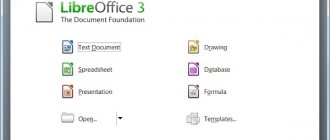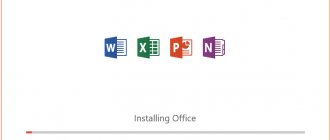Microsoft announced last year that it would be the successor to Office 2016, an unsigned version of the app suite, and that the update would ship in about a year.
Microsoft says the package, called "Office 2019," will be aimed at customers, primarily enterprise customers, "who are not yet ready for the cloud."
But beyond that description, Microsoft is unclear about the prospect of Office 2020 with a "perpetual" license, which allows a customer to run the suite until it's reached without additional payments. So, we've put together some of the pressing questions you might have about the package.
What is an “eternal” office?
Microsoft categorizes software by how it is paid for, distinguishing between a license that has been purchased directly from one that is essentially "rented" as it is paid over time, such as a subscription.
In most cases, Microsoft uses the term "one-time purchase" to refer to a software license that is paid "at one, first price to get Office applications for one computer." The purchase gives the buyer the right to use the Office for an unlimited period. In other words, the license does not expire and users can run the package for as long as they want.
When will Microsoft release Office 2020?
In the second half of the year, the company began launching the package. October 2, 2020 (planned) “This release, planned for the second half of 2020, will include forever versions of Office applications... and servers,” wrote Jared Spataro, general manager of Office, in a September company blog post.
Spataro at the time referred to "Office 2019" as the nameplate for the app collection.
In late September 2020, Microsoft first offered Windows Office Office 2020 to Office 365 customers, followed by retail versions. Office 2020 will likely arrive around the same time of year, in the same order.
That's why.
Microsoft is now releasing two feature updates to Office 365 ProPlus - ProPlus is a standard package that provides rights to locally installed applications, including Excel, Outlook and Word, to up to 365 subscribers - annually. These feature updates begin reaching customers in September and March of each year. (Most recently, on September 12, Microsoft released a feature update labeled 1708
, Office 365 ProPlus.)
Since the forever licensed version of Office 2020 will be built from code already released as Office 365 ProPlus, and since the beta version of Office 2020 will debut in mid-2020, it's more likely that Microsoft will use a March feature update for Office 365 ProPlus subscribers than a feature update in September 2020 as the basis for Office 2020.
During the three months following the March 2020 ProPlus feature update and leading up to the Office 2020 preview in July 2020, Microsoft will allow time to process customer feedback and resolve any surface-level bugs. It's likely that the change from the Office 2020 beta release date (May 2020) to Office 2020 (mid-summer 2018) was necessary to accommodate the feature update schedule in March; Microsoft did not commit to a release plan for Windows 10-esque features for Office 365 until the launch of Office 2020 in September 2015.
All Microsoft has to do is announce the apps shipped to ProPlus subscribers—Word, Outlook, etc.—as the official versions of Office 2020 are renamed. This could be September 11, 2020, the likely release date for the second ProPlus update this year.
Announcement of the Microsoft Office 2020 office suite - what's new?
Miscellaneous 09/27/2017 | 0
No matter how Apple promotes its iWork office suite, consisting of Pages, Numbers and Keynote, Microsoft Office remains the most popular document management solution on the market. Today, as part of the Ignite conference in Orlando, the official announcement of the Microsoft Office 2020 office suite took place. Alas, the company did not disclose all the details about its new product, limiting itself to only general information, but even this is enough to understand what exactly it will be. itself a new software that is used daily by millions of people around the world.
The Microsoft Office 2020 office suite, like its predecessors, will consist of “perpetual” Word, Excel, PowerPoint and Outlook programs, as well as server solutions including Exchange, SharePoint and Skype for Business. The American corporation noted that the future lies precisely in “cloud” software, however, the new office suite will not receive a “hard” connection to the Internet, that is, it, like previous versions, can be freely used even without a network connection.
One of the main innovations of the Microsoft Office 2019 suite will be new and improved old drawing tools - the programs will be able to detect the degree of pen pressure and tilt effects. In addition, Excel will feature new formulas and charts for data analysis. The PowerPoint application will acquire new animation elements, and in all server products Microsoft will rely on improved administration and security, which all IT companies have been paying great attention to in recent years.
In addition, Microsoft Office 2020 will feature new voice capabilities, and the interface of all programs will be improved - it will become simpler and more understandable for novice users. Microsoft has promised that it will reveal more details about its new office suite in the coming months, and its first public test build will be available for download and installation in mid-2020, that is, in about six months.
Attention! Until July 26, everyone can receive a Xiaomi Mi Band 5 sports bracelet for free, spending only 2 minutes on it.
Join us on Google News , Twitter, Facebook, VKontakte, YouTube and RSS to stay up to date with the latest news from the world of future technologies.
AKKet.com Telegram channel
Receive notifications about new materials directly in the messenger - on iOS, Windows, Android and Linux.
MicrosoftOfficeOffice 2019Announcement
What's coming in Office 2020?
Microsoft doesn't say.
The feature set may not appear until mid-2020, when Microsoft releases a preview of the package. For its part, Spataro has hinted at what's coming to Office 2020, naming features like Ink replay in Word and Morph in PowerPoint, which are available to Office 365 subscribers for one and two years, respectively.
And this is important to remember.
It's possible that Office 2020 will include groundbreaking new features. For what? Because the always-updated version of the suite is built by adopting the accumulated changes since its predecessor—changes rolled out to Office 365 subscribers over the past few years.
Microsoft will take the version of Office 2020 that Office 365 ProPlus users use in, say, spring 2020, and that version of Office 2020 is different from the version of Office 2020 released in 2015 as a one-time purchase - freeze the code, and call it Office 2020.
Office 2020 released
Microsoft has released Office 2020, a suite of office applications for Windows and Mac users, as announced in its blog. This office suite is designed for those corporate and personal customers who do not use the Office 365 subscription service, which is updated monthly.
Office 2020 largely includes all the features that have been gradually added to Office 365 over the past three years. The update affected Word, Excel, PowerPoint, Outlook, Project, Visio, Access and Publisher. Office 2019 is available for purchase with a business license starting today and will be available to all other users in the coming weeks.
Also in the coming weeks, Microsoft promises to release updates for server products - Exchange Server 2020, Skype for Business Server 2020, SharePoint Server 2020 and Project Server 2020.
In what forms and formats does Microsoft sell Office 2019?
Microsoft doesn't say. Current Office one-time purchases range from Office Professional Plus 2020 (Windows) and Office Standard 2020 for Mac (macOS), enterprise-grade SKUs available only through volume licensing, to retail packages such as Office Professional 2020 (Windows) and Office Home and Business 2020 for Mac (macOS).
I'm sure Microsoft will offer Office 2020 to commercial customers through volume licensing, but it may be dubious to assume it will sell one-off versions at retail.
At some point, Microsoft will stop selling perpetual Office licenses, analysts agreed. (Microsoft has made no secret of its preference for subscriptions—Office 365 in this case—for the recurring revenue they generate.) Dumping one-time, one-time purchases would be a logical place to start reducing the recurring option.
Spataro didn't say so, but Office 2020 will come in both Windows and macOS versions. There would be little reason to select the latter, for example, since Microsoft also dominates the production space of this OS.
Why is Microsoft shipping Office 2019 this year?
Another big question.
In 2020, Microsoft reduced the rights of non-subscribing Office users when it announced that forever-licensed versions of Office 2020 would no longer be able to connect to Microsoft cloud services, including hosted email (Exchange) and online storage (OneDrive for Business ) after October 13, 2020.
Under the new rules, perpetual license holders for Office 2020 can only use these services for the first half of their ten-year support lifecycle, Microsoft's part adding "mainstream." Mainstream support for Office 2016 ends on October 13, 2020.
By releasing Office 2020 this year, Microsoft will give businesses about a year or so to migrate from Office 2016 (or earlier) to
disabling the cloud service.
Will Microsoft sell a one-time version of Office after Office 2020?
We don't think so.
For what? Downtime: Microsoft is cutting support for Office 2020 by 30%.
Instead of the usual decade of support—the first five being Microsoft's dub of "Mainstream," the second fifth being "Extended," which only provides security updates—Office 2019 will only get seven years.
"Office 2020 will provide 5 years of mainstream support and approximately 2 years of extended support," Spataro said in a Feb. 1 statement. "This is... to agree on the support period for Office 2016. Extended support will end on 14/10/2025."
Office 2020 expires on the same day.
The simultaneous retirement of two always-on suites is the strongest signal, but Microsoft plans to end the one-time purchase option after Office 2020. Reducing the length of 2020 support is something Microsoft has never Office for Windows - It will be able to wash both suites at the same time, ending the ten-year purchase option and making subscription-based Office 365 the only way to license applications.
The deadline expires in 2025, and Microsoft will be selling Office 2020 for years—during the mainstream, most likely while hedging about a successor throughout. But it can still provide enterprise customers with a multi-year heads-up that is the last of its kind (and that those customers should upgrade to a subscription).
Microsoft introduced Office 2020 Preview for commercial customers
Microsoft spokesman Jared Spataro announced on the company's official blog that it has begun providing commercial customers with access to a preliminary version of Office 2019 Preview, which includes Word, Excel, PowerPoint, Outlook, Publisher, Access, Project, Visio and OneNote for Windows. 10.
Improved digital pen support brings Office 2019 apps closer to drawing with pencil and paper
This is the first public preview of Office 2020 - in the coming months the company promises to also release preview versions of Office 2020 for Mac, Exchange 2020, SharePoint 2020, Project Server 2020 and Skype for Business 2020. The developer emphasizes that in terms of convenience, security, cost of ownership , deployment and management, the future is in the Office 365 ProPlus subscription service. But for businesses that are not yet ready to move to the cloud, Office 2020 includes updated programs and features. For enterprises, it is sometimes very important that the set of capabilities, application design, etc. do not change for a certain period after installation. Office 2020, unlike an Office 365 subscription, is designed to do just that.
New chart types include funnels and 2D maps to help you identify the essence of a problem, identify trends, and discover promising opportunities based on data analysis
Among the innovations in Office 2020, the company mentions support for handwriting input in all applications - we are talking about wireless covers for the digital pen, support for tilt and pressure effects. Excel also includes more powerful data analysis tools, such as new formulas, charts, and Power BI integration. PowerPoint has added sophisticated presentation features such as Morph and Zoom effects. Most of these features are new only to Office 2020 users—they've been available to Office 365 ProPlus subscribers for a long time.
PowerPoint Zoom lets you create more dynamic and immersive presentations
Office 2020 also adds a number of innovations that make it easier to manage your IT infrastructure. For example, support for modern Click-to-Run (C2R) deployment technology introduced in Office 2013 becomes the only option in Office 2019, and MSI becomes a thing of the past. Benefits of C2R include predictable monthly security updates, modern installation apps, reduced network load with Windows 10 download optimization technology, and an easy upgrade path to Office 365 ProPlus.
Is it true that Office 2020 will not run on Windows 7? Or even Windows 8.1?
Yes it's true. Or maybe, no, that's not true.
Along with announcing that support for Office 2019 will end in seven years, Microsoft has also painted system requirements with a broad brush. The requirements are significantly more stringent than Office 2020.
According to a Feb. 1 post by Spataro, Office 2020 will only be supported on Windows 10. No love for Windows 7 (which is retiring in January 2020 or a year after Office 2019 debuts) or Windows 8.1 (January 2023, four years or more ). Those two older OSes should be satisfied with Office 2016 (which, again, doesn't end support until October 2025).
Spataro offered no explanation for the limited support. Previously, for example, when Microsoft said that Office 2020 could not be used to connect to the company's own cloud services after October 13, 2020, it rationalized the decision by saying it would tie the new ones (Office 2020 in this case) to the old ones (Windows 7 or Windows 8.1) have resulted in unconventional security and impressive features.
From Microsoft's perspective, the same reasoning can be applied to this decision. The cynical among us will instead see it as yet another move to move everyone to Windows 10 ASAP, limiting the functionality of previous Windows releases.
But while Microsoft has made it clear that it won't support Office 2020 on Windows 7 or 8.1, there's no guarantee that the suite won't necessarily work on devices running those operating systems. For all we know, Office 2020 may run, perhaps not entirely, on older OSes. However, even if this were the case, Microsoft could easily prevent the Office security update from accessing PCs running Windows 7 or 8.1. Historically, it has done just that, such as when it blocked Windows 7 systems from receiving Internet Explorer 8 (IE8) security updates after January 2016.
Microsoft Office 2020 – features of work
In order to actively and successfully use all the main advantages and features of Microsoft Office 2020, you should pay special attention to one rule. First of all, you must update your device to Windows 10. This product, unlike previous versions, receives a full 5 years of basic support. In order to install the version correctly and quickly, it is important to use the Office Deployment Tool. It can be easily downloaded from the Microsoft Download Center (free download). Microsoft Office 2020 is installed directly on the system drive. The most important thing to know is that this arrangement cannot be changed.
Microsoft Office 2020 is a product that can only be installed on one selected computer. If you need to access Office tools on other devices (tablets, phones), then you can use Office 365.











